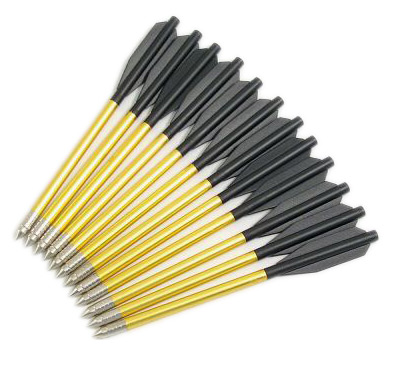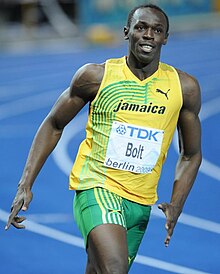Osterkraut wrote:
When I was a child, I'd argue with the dictionary, too. My mom would always razz me for it, till my grandfather informed me that she used to do it too.
Don't forget, anybody can write a dictionary, there is no group overseeing them and checking for correctness.
Don't assume it's correct just because it's published.
Shawn
Trans_Maro wrote:
Osterkraut wrote:
When I was a child, I'd argue with the dictionary, too. My mom would always razz me for it, till my grandfather informed me that she used to do it too.
Don't forget, anybody can write a dictionary, there is no group overseeing them and checking for correctness.
Don't assume it's correct just because it's published.
Shawn
That's what I told my mother!
So by the machinery handbooks definition a screw can be defined as a bolt if it is fit into a hex recess or groove that captures the head?
SVreX wrote:
That's essentially a very good article, but there are a lot of errors in it (like the name "cap screw" next to a hex bolt
Every box of "bolts" I buy from any vendor says "cap screw" on it. :shrug:
The first image google returned for 1/4-20 cap screw

Since we're referencing documents, I dusted off my copy of AC 43.13-1B
It says:
7-14. GENERAL. In general, screws differ
from bolts by the following characteristics.
a. Screws usually have lower material
strength, a looser thread fit, head shapes
formed to engage a screwdriver, and the shank
may be threaded along its entire length without
a clearly defined grip. Screws may be divided
into three basic groups: structural screws, machine
screws, and self-tapping screws. Screws
are marked as required by the applicable Army
Navy (AN), National Aerospace Standard
(NAS), or Military Standard (MS) drawing.
Normally a manufacturer places his trademark
on the head of the screw. Several types of
structural screws are available that differ from
the standard structural bolts only in the type of
head.
It doesn't actually give a clear definition for bolt though.
All of section seven can be found here
Shawn
This argument has substance, much better than the political BooE36 M3, Please continue, Whitworth anyone ?
I don't think there are whitworth screws, I could be wrong though.
Since whitworth sizing is based on the length of the flat on the bolt head, it seems impossible to have a whitworth fastener that engages with a screwdriver.
What about these? Screw, bolt or stud?

Shawn
Osterkraut wrote:
When I was a child, I'd argue with the dictionary, too. My mom would always razz me for it, till my grandfather informed me that she used to do it too.
The fun part is if enough people disagree with the dictionary long enough the definition gets changed. So history isn't written by winners, just conformists following low level dissidents.
I just realised, the problem with the AC 43.13 definition above is that it uses "may" instead of "shall" so it's not a concrete definition.
May implies that there can be differences from what is described.
This is all getting to be clear as mud.
JoeyM wrote:
Grizz wrote:
I prefer to screw, then bolt.
Wait... what are we talking about?
You only need to bolt if you are working with a nut. If you are not, take your time and do the job correctly; using three or four screws is usually a better way to do it

can quotes go into "Say What" in the mag?

jde
Reader
2/12/12 1:38 p.m.
I thought this was going to be about the old joke about shop class where the teacher asks the blonde the difference between a bolt, a nail, and a screw.
"I dunno, I've never been bolted..."
(try veal, tip waitress, etc., etc.)

SVreX
SuperDork
2/12/12 1:52 p.m.
Osterkraut wrote:
When I was a child, I'd argue with the dictionary, too. My mom would always razz me for it, till my grandfather informed me that she used to do it too.
So, you are OK with the fact that your referenced definition would call virtually all "bolts" on a car "screws"?
Try walking into any hardware store on the planet with one of them and tell the guy you need a similar screw. He'll correct you every time.
You aren't actually answering the question of what the difference is between screws and bolts. You are referencing a manual that you choose to agree with whether or not it is correct. At least I tried.
Did you pursue engineering so you could do logical problem solving, or so you could cite poorly written reference manuals in a vain attempt to win internet arguments?
It doesn't take much logic to see how far off those particular definitions are. Use your head! You are very smart!
Trans_Maro wrote:
Anything above 1/4" diameter is a bolt.
Anything below (numbered sizes) is a screw.
That's why machine screws look like little bolts and lag bolts look like giant screws.
That's what I always thought. Once you got past 1/4" and got down to 10-32 and stuff, you were dealing with screws.
SVreX wrote:
BTW, there are also two different kinds of tap and dies.
Most of us have taps and dies designed to cut what are known as continuous threads. If you keep going, you can make a threaded rod.
Plumbers, however, use tapered dies for threaded water, steam and gas lines. It's a screw. That way, the tighter you tighten the pipe, the tighter the joint gets, and more resistant to leakage (until you over-tighten it).
2 kinds of taps and dies?
Does this mean I can get rid all the others?
Ah, screw it.  Just properly torque the damn things.
Just properly torque the damn things.
OBTW: who knows what a 'grub screw' is? And no it's not immature insect sex.
Set screw = grub screw.
Know what a gudgeon pin is?
Yes, Lordy. If your gudgeon pin is missing your piston won't stay on the connecting rod.
Got to make sure to clean up the swarf when you get ready to put your engine together too.
Trans_Maro wrote:
Don't assume it's correct just because it's published.
Ever car mag out of the UK should have this on the cover.
Swarf? Those little metal shavings?
Good thing they don't affect the installation of your nave plates.
Shawn

Lesley
SuperDork
2/12/12 9:07 p.m.
I always assumed that screws were the ones with pointy ends, bolts were blunt.

SVreX
SuperDork
2/12/12 9:58 p.m.
Lesley wrote:
I always assumed that screws were the ones with pointy ends, bolts were blunt.
 I think that's about as close as we're gonna get!
I think that's about as close as we're gonna get! 
Dammit Lesley!
You just ruined a perfectly wonderful debate with that piece of logic. 
Shawn












































